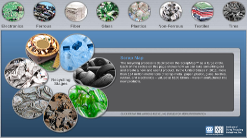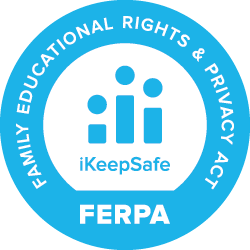Scrap Mapping
Students will investigate the "life cycle" of a chosen commodity (glass, ferrous metals, nonferrous metals, tires, textiles, or plastic). They will create a model of the process that keeps these materials in a looped system - from initial product to use, recycling, and renewal in the form of a "ScrapMap." Through science and engineering, we can keep valuable resources in circulation!
Grab and Go Lesson:
ScrapMapping
Description:
Students will investigate the "life cycle" of a chosen commodity (glass, ferrous metals, nonferrous metals, tires, textiles or plastic). They will create a model of the process that keeps these materials in a looped system - from initial product to use, recycling, and renewal in the form of a "ScrapMap." Through science and engineering we can keep valuable resources in circulation!
Target Grade Level:
Grades 6-8
Discipline or Course:
Earth Science
Time Frame:
Teachers can choose all or parts of this sequence to meet class needs and/or desired length of time.
Part 1: 20 minutes; Part 2: 20 minutes ; Part 3: 20 minutes; Part 4: 5 minutes
Materials:
- Computer with internet access
- Poster board or other means of display
- Markers, colored pencils or crayons (optional)
Safety:
Practice smart internet safety habits.
STUDENT CONTENT BELOW
Description:
Students will investigate the "life cycle" of a chosen commodity (glass, ferrous metals, nonferrous metals, tires, textiles or plastic). They will create a model of the process that keeps these materials in a looped system - from initial product to use, recycling, and renewal in the form of a "ScrapMap." Through science and engineering we can keep valuable resources in circulation!
Time Frame:
Part 1: 20 minutes; Part 2: 20 minutes ; Part 3: 20 minutes; Part 4: 5 minutes
Materials:
- Computer with internet access
- Poster board or other means of display
- Markers, colored pencils or crayons (optional)
Safety:
Practice smart internet safety habits.
Directions:
Students should complete all parts of the lesson in order.
Click on the blue underlined text (hyperlink) to access videos, activities and other web resources. If you are not logged into your JASON Learning account, you will be directed to www.jason.org. Please click on login/register, enter your username and password and then proceed with the lesson.
Watch the following video to learn how recycling centers use a shredder to recycle metal from cars. Video - The Shredder Story . Respond to the following questions:
- What surprised you about the shredder?
- Why is it important to recycle cars?
- What is meant by "scrap is not waste, recycling is not disposal?"
- What are some of the safety measures in place around the shredder?
- Visit the ISRI Activity called
Activity - Mapping Scrap
. Scroll down through the text until you see the Recovered Paper ScrapMap. Take a look at the steps involved in recycling a newspaper into the box in which your new computer is shipped. This is an example of a ScrapMap.
Record 3 observations about what kind information is included on a scrapmap. - Now choose a recyclable commodity from the following list: glass, ferrous metals, non-ferrous metals, tires, textiles, plastics. Record your choice on your answer document.
- Use the links to the ISRI website to begin your research about the recycling process for your commodity.
- Create a ScrapMap to model how the commodity you have researched is part of a system representing a continuous series of steps in the recycling process. Be creative in your design. You can make a poster, a digital representation or any other method to share your ScrapMap. Be sure to credit any images or data that is not your own.
- Use the Game - Scrap Map Interactive to compare the ScrapMap of the material you researched with the one that you designed. What new information, if any, can you add?
- Share your ScrapMap with your teacher and classmates following your teacher’s instructions.
- How do you think recycling the commodity you researched helps the environment?
- How would you launch a school-wide campaign to get everyone in the school to make changes in their recycling habits?
- Play the Game - Scrap Titans where you are a scrap entrepreneur competing to form the most profitable scrap recycling business. Good luck!
- Take a look at the Kids Recycling Fact Sheet to learn more cool facts and figures about recycling!






